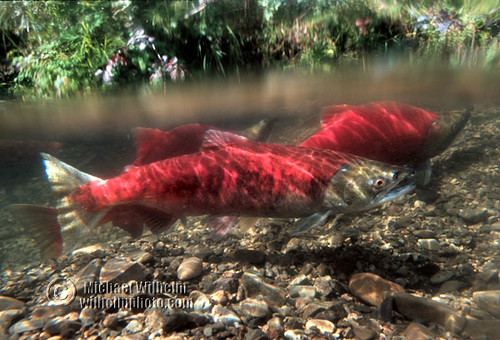
The smell of rotting fish tends to grab your attention… so does fresh bear poop. I also notice, in some places, the thick vegetation along the stream I’m exploring in Western Alaska lies flat where a bear had been sitting. The spruce forest closes in behind me as I round several bends and my senses are on alert. I’m looking for a place to photograph sockeye salmon on the final leg of their life cycle.
The sockeye began here as fry hiding among the wood debris, careful to avoid the trout. As fingerlings, they left the confines of this small stream venturing, on impulse, into the lake and then downriver to Bristol Bay. In the salt water they made their living, growing several fold in the rich marine environment. Many would fall victim to hungry predators along the way. But these salmon made it back carrying the stuff to spawn a new generation and ready to leave nutrients from their decaying bodies in their natal stream. Microscopic organisms on up to large coastal grizzlies benefit from this rich food source cycling inland from the sea.
The salmon scatter as I slide into the cold, clear water. Soon they will be back, driven by their need to continue up stream. While I wait, I think about how bears wait for the salmon to return too in this place where people seldom visit. Their ability to survive a long cold winter may very well depend on their success catching these fish.
For a moment, I wonder what a bear might think if he peaks over the bank and sees me laying motionless in the water in my black wetsuit. Will I look like a smaller bear fishing in his spot? Then I glance downstream and a beautiful red sockeye is just a couple feet from my head and my thoughts are filled with a sense of wonder and admiration.
I’ve come a long way to be here with these salmon. As I contemplate their amazing journey to the ocean and back to this tiny stream of their birth, my trek seems like nothing at all.
msw
